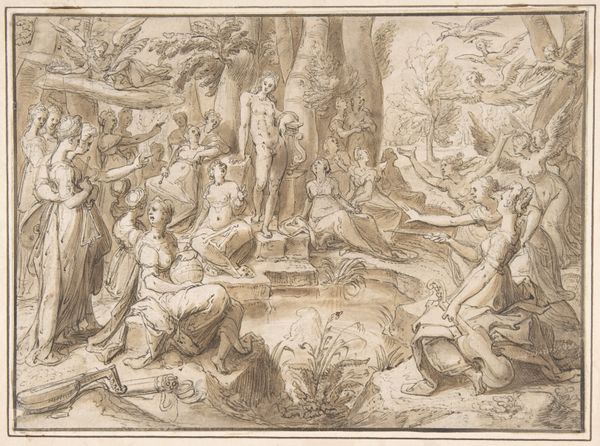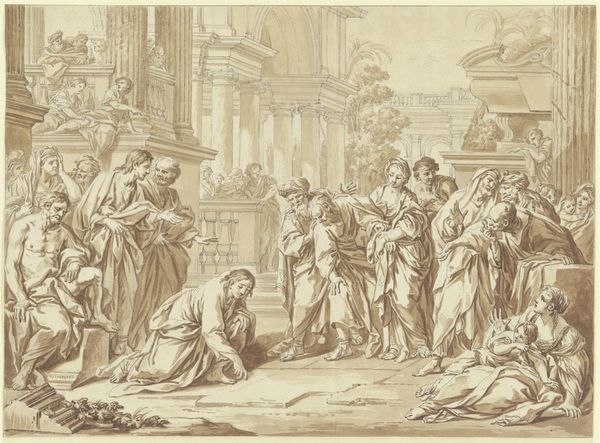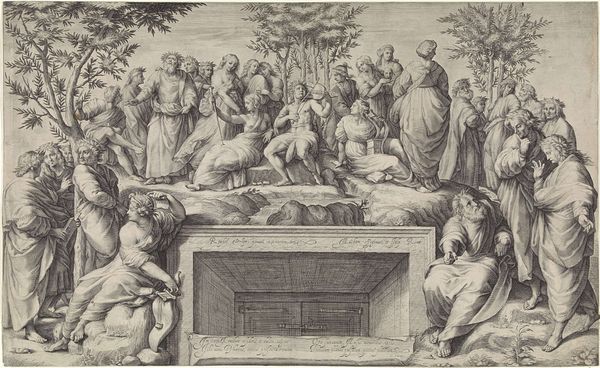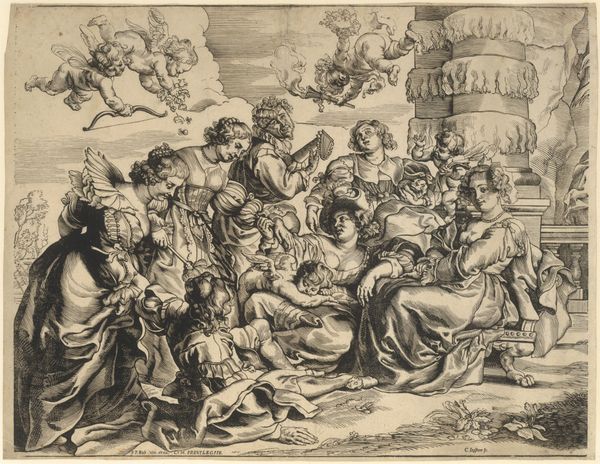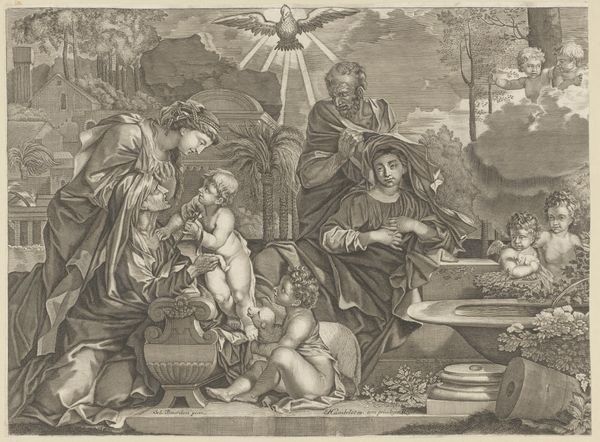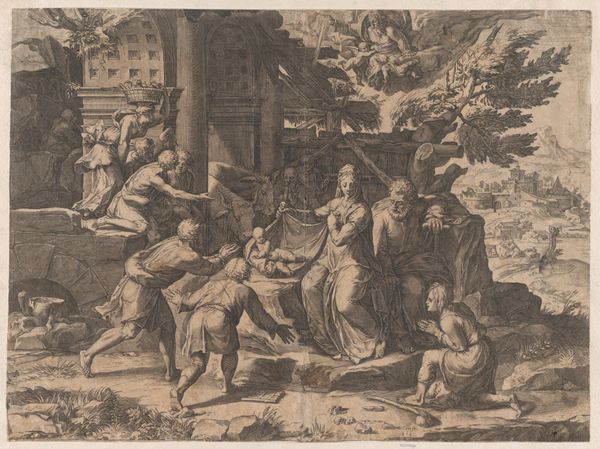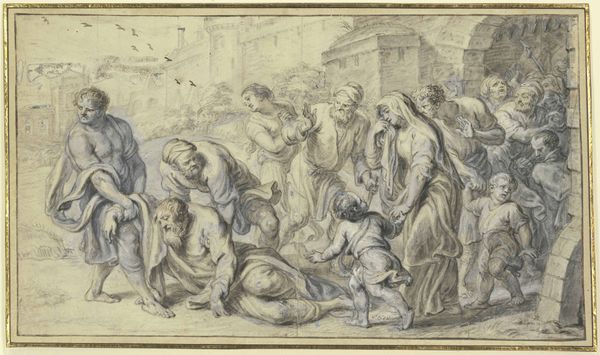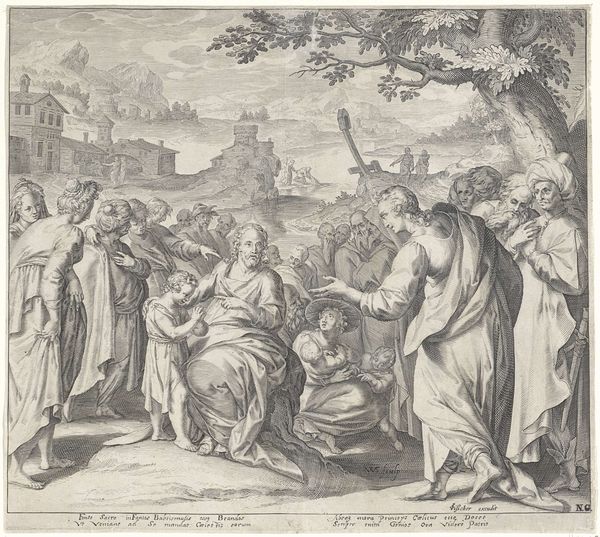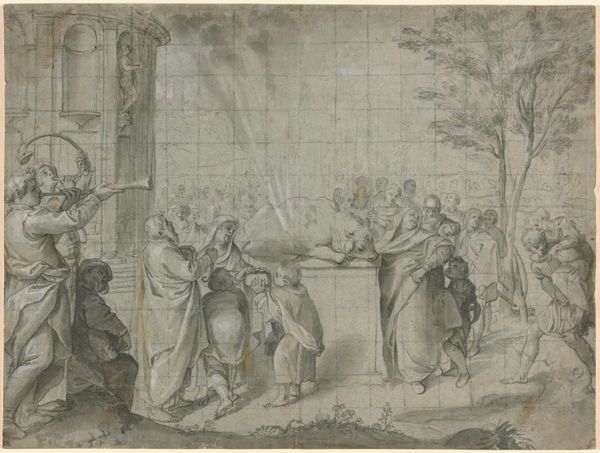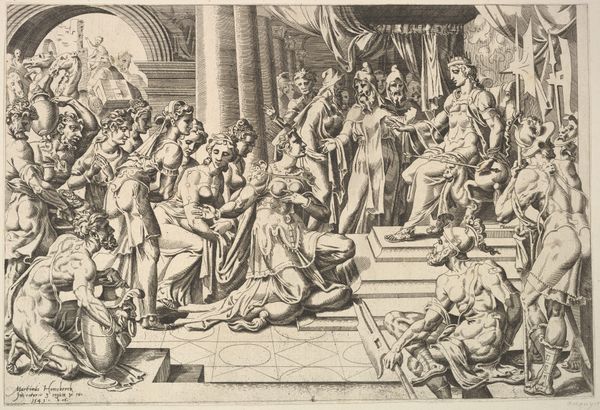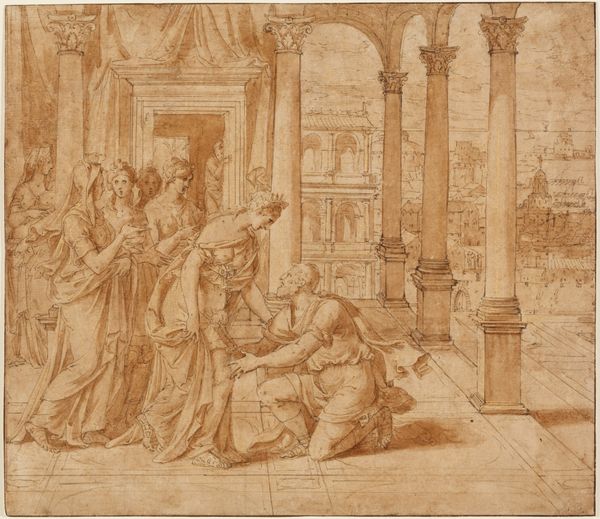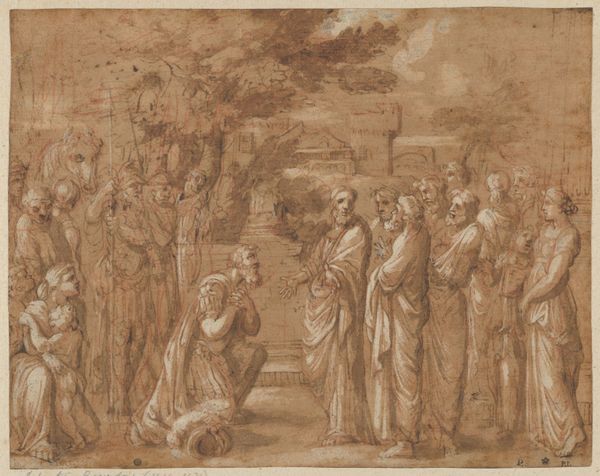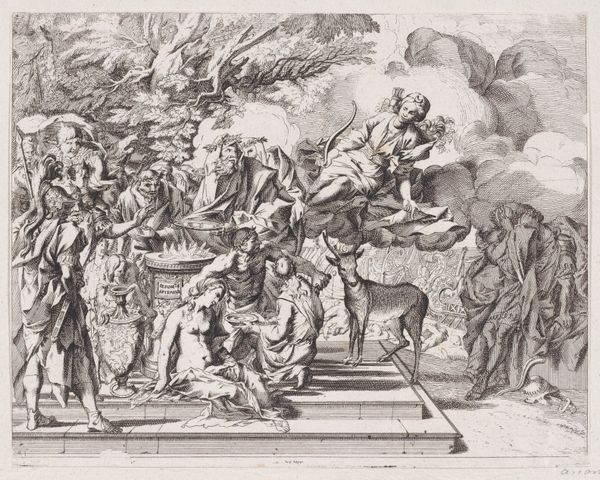
painting, oil-paint
#
narrative-art
#
baroque
#
dutch-golden-age
#
painting
#
oil-paint
#
figuration
#
oil painting
#
group-portraits
#
history-painting
Dimensions: support height 83.2 cm, support width 126.1 cm, outer size depth 6.5 cm
Copyright: Rijks Museum: Open Domain
Editor: Here we have Pieter Lastman's "Orestes and Pylades Disputing at the Altar," painted in 1614, rendered in oil. The dramatic scene unfolds with a rather theatrical intensity. What strikes you most about its composition? Curator: The initial formal element that captures attention is undoubtedly the artist’s construction of space and how figuration interacts with the landscape. Consider the high horizon line, a structure quite prevalent in Dutch Golden Age painting, it tends to compress the pictorial space. Do you observe how this impacts your perception of depth? Editor: I do! It almost flattens the scene, pushing everything forward and making the figures seem quite crowded around the altar. Curator: Precisely. This effect directs the viewer’s eye towards the central conflict between Orestes and Pylades. But, more critically, let us analyze the tonal range within the chromatic scheme deployed in this piece. Lastman is known for his command of color. Consider how the light plays across the scene, highlighting certain figures while others remain shrouded in shadow. It almost suggests a dramatic spotlight effect, wouldn't you agree? Editor: Yes, it’s a sophisticated use of light and shadow that heightens the emotional impact, specifically on the garments. You can see how the color palette enhances the overall expressiveness, making the central figures almost sculptural. Curator: Indeed. This meticulous application serves to draw attention to the dramatic interplay between forms, enriching the thematic narrative of Lastman's composition. Ultimately it also adds to the overall symmetry. Editor: Seeing how you’ve broken it down into form and composition, I can really appreciate the visual elements more clearly. Curator: Indeed. Lastman’s deployment of space, color, and tonal range enriches both narrative expression, thematic concerns, and the painting's very structure.
Comments
rijksmuseum about 2 years ago
⋮
This painting depicts a story from Greek antiquity. Orestes and Pylades (left) were caught trying to steal a statue of Diana from the temple (left background). One of them will have to die. At the altar, the friends argue over who will give his life for the other. Lastman’s densely composed compositions, his bright colours and the expressive gestures of his figures – all had an impact on the young Rembrandt.
Join the conversation
Join millions of artists and users on Artera today and experience the ultimate creative platform.
